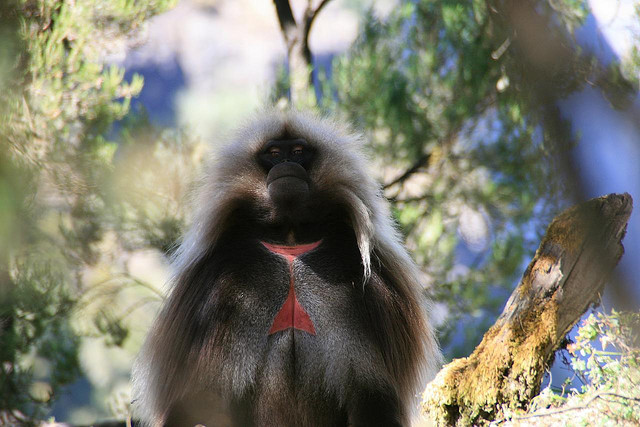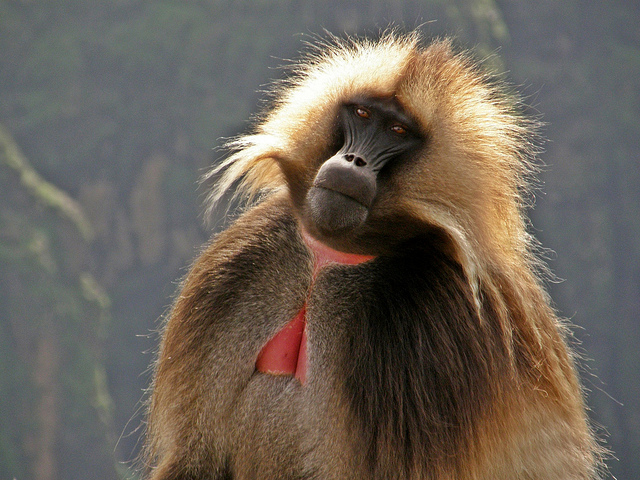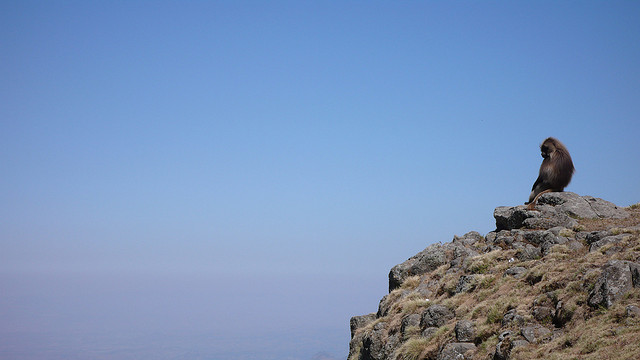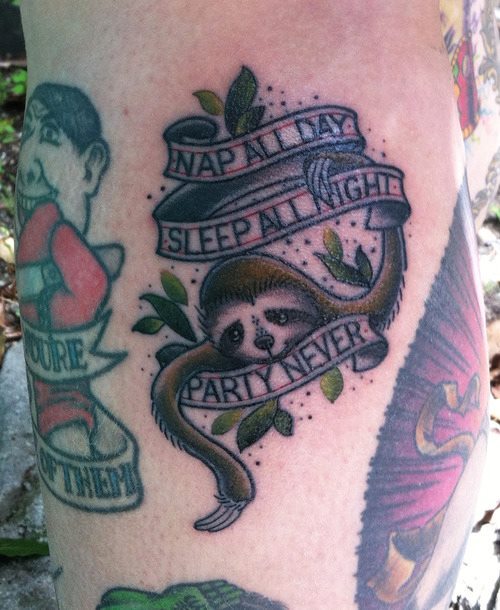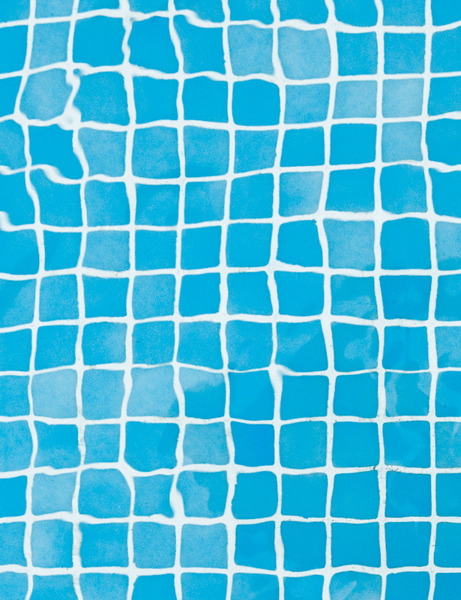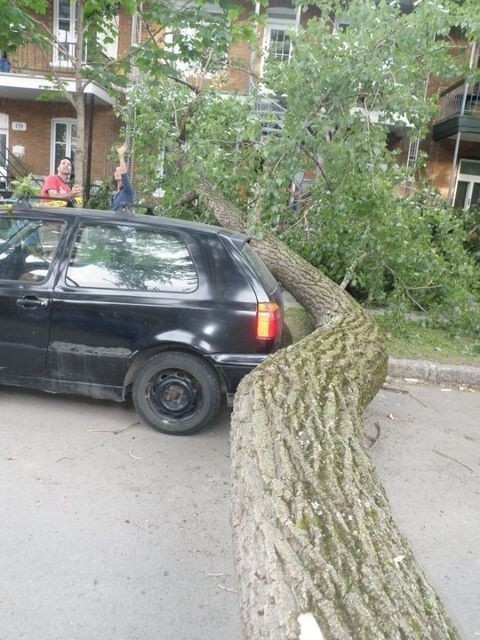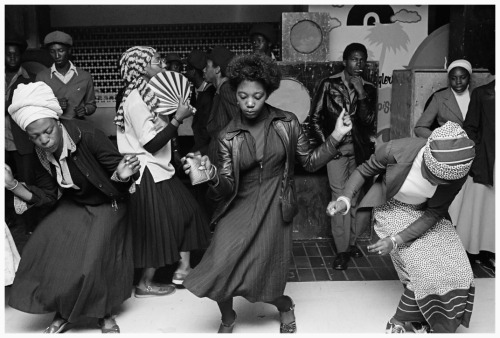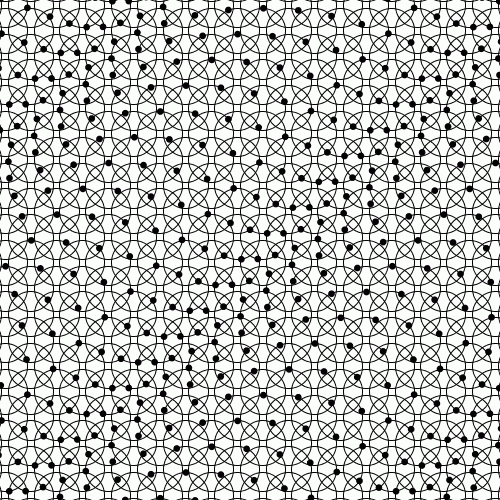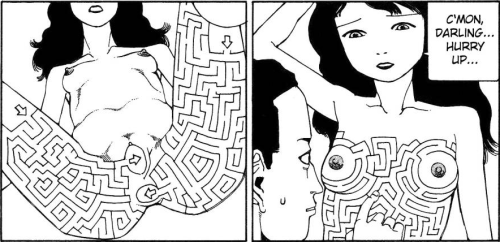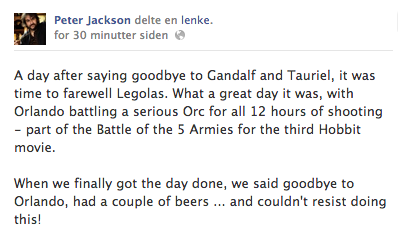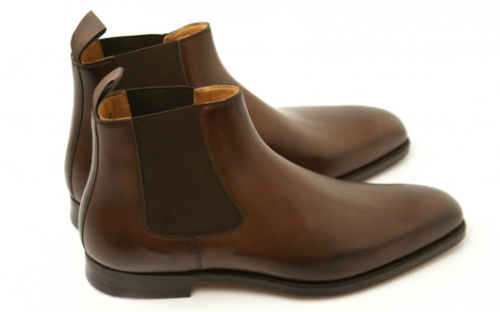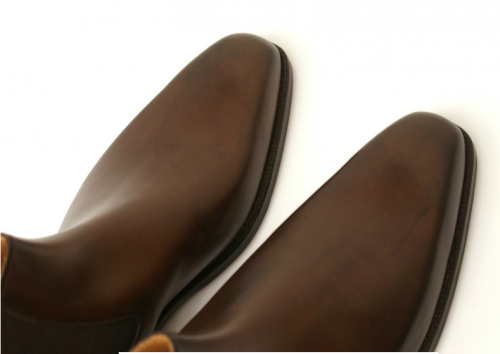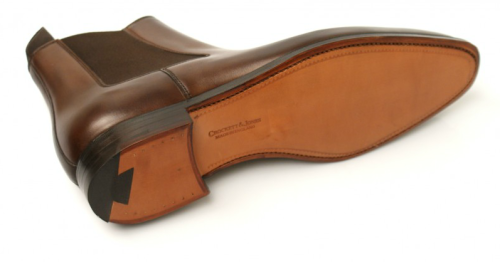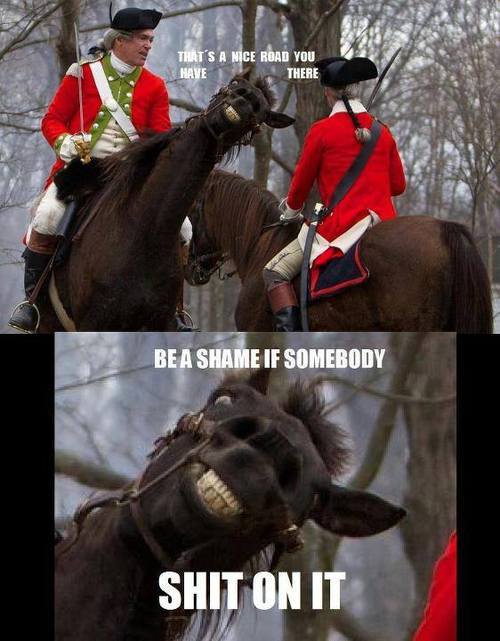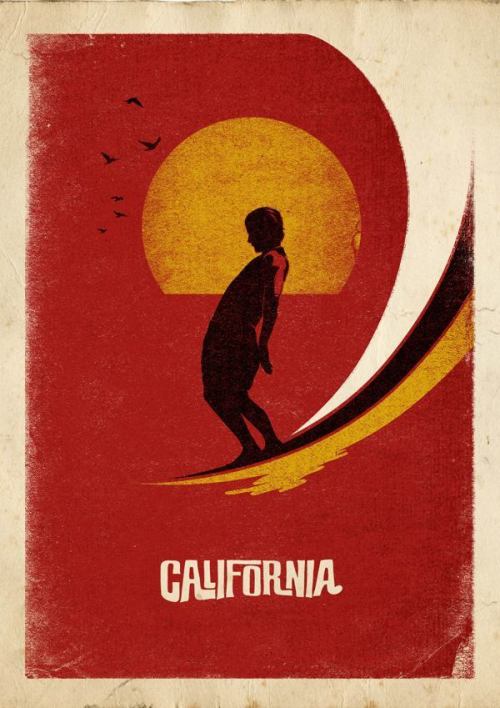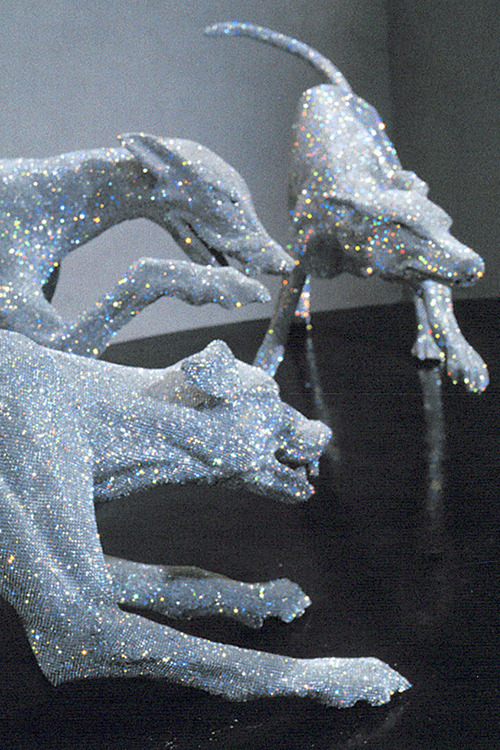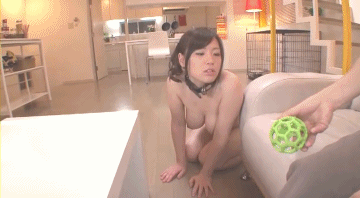
Diego Franco Gonçales
Shared posts
17 Jul 03:18
The Gelada: Unique Primate from the Roof of Africa
by RJ Evans
High up in the Ethiopian mountains lives the Gelada. It lives nowhere else and although its closest living relative is the baboon, with its hairless face and short muzzle the gelada looks more like a chimpanzee. Isolated in these remote Ethiopian Highlands (often called The Roof of Africa) this primate has developed a way of existence (one might call it a culture) all of its own.
To begin with the gelada is a graminivore which means that it only eats grass. Fortunately, the highlands in which they live are cooler and a lot less arid than many parts of Ethiopia and they rarely experience any kind of food shortage. They will also become granivorous when the grass is in seed. In fact, they actively prefer the seed to the grass – it is probably a welcome change.

Insects are hardly ever eaten and only when they are easy pickings. The gelada does not gulp down its food like many primates, however. It chews – and in the act of mastication they are as effective as zebras. It has a marvelous set of incisors which have been adapted for chewing.
They don’t really do trees either – partly because the trees in the Ethiopian Highlands are sparse and the geladas have discovered that hiding in tall grass is more effective. This is where they also sleep, but they also take to the cliffs as well, putting themselves out of the way of predators who are either loathe to or incapable of climbing. One can only imagine if they ever admire the breathtaking view of the Siemens Massif of Ethiopia.
Although they rarely climb, when they do they look quite at home.
Many gibbons and other primates have developed colorful posteriors with which to attract potential mates. However, you will rarely see a gelada’s bottom. To adapt to their environment they developed sturdy little fingers and are expert at pulling grass and other roots.
However, their diet means that they have developed a unique shuffle when they feed. Geladas squat down and move around by sliding their feet forward when they are feeding, without changing their posture. As their rumps are then hidden by this mode of dining, nature had to find another way to display it.
However, every species needs its means and methods of attraction and the gelada has a bright red chest patch (in an hourglass shape) which is visible whenever it faces friend or foe. Although it is somewhat reminiscent of ET’s glowing heart it is used to show good health and readiness to procreate. It is more noticeable on males, appearing a bright red color and surrounded by white fur. In the female, however, the patch will brighten when she is ready to mate.
On the occasions you see do them from behind it could become quite obvious why the patch has evolved in to this particular color and shape...
The female will also produce a necklace of blisters on the patch at this time. However, these are not painful and develop simply to show that she is ready to respond to male attention. The females also have small limps of skin around their patches. They females are not exactly pushovers, either.
Geladas live in two distinct types of units. The first type is made up of males only and its members are either adolescents who are not ready to form their own units or those who have been unsuccessful in doing so. The other type is the family unit, consisting of up to 12 females and their young and up to four males. Only one male, the alpha, is allowed to mate with the females.
On occasion one of the other males, or a stranger from outside the unit, will try and take things over. This is where the females sometimes step in. If they do not wish for a new alpha male they will attack the interloper and chase him off. If they are on the lookout for a change, however, they will sit, chew some grass and watch the fight.
Once a hierarchy is established there is very little conflict between the males in a unit. Virtually all fights within a unit are caused by the females. Indeed they are mostly the ones to display aggression towards another unit. However, if this escalates in to a fight then the males will (probably reluctantly) join in. It is vital, after all, for a unit to remain safe. In all male units, again there is little internal conflict. However, the members of a single unit will often show aggression towards both family and other all-male units.
Sometimes, it isn't such a bad idea to simply hide until things blow over.
Yet the units are not as ‘locked down’ as you might imagine. Between two and 25 reproductive units can come together and form what is known as a band which incidentally can include some all-male units. Occasionally, and for short periods of time only, these bands can form a herd made up of up to 60 units.
On these rare herd occasion, youngsters from various units will often take the opportunity to get to know each other better.
The males who are not allowed to mate because of their status in a reproductive group do not let this get in their way. They will, when they can, mate with a female. While gelada mating can be a noisy basis, when it is extra-marital (as it were) the male will conquer his desire to grunt with delight. If, however, he is caught then he will face the wrath of the cuckolded alpha male. It is about the only time the alpha males will get belligerent with other males in their group. It seems that deceit, crime and punishment are not simply human traits after all.
You might think that the gelada was safe in its Ethiopian Highland home. However, the population has halved since the 1970 and is now estimated to be just over 200,000. As people have expanded Ethiopia’s agricultural base many gelada have been shot for raiding crops on areas upon which they used to forage. However, the species is no longer trapped for laboratory use and they are no longer hunted en masse for their pelts. Furthermore, it is hoped that the Ethiopian government will create new National Parks and Reserves and that the future of this unique primate will be assured.
First Image Credit Marc Veraart
To begin with the gelada is a graminivore which means that it only eats grass. Fortunately, the highlands in which they live are cooler and a lot less arid than many parts of Ethiopia and they rarely experience any kind of food shortage. They will also become granivorous when the grass is in seed. In fact, they actively prefer the seed to the grass – it is probably a welcome change.

Insects are hardly ever eaten and only when they are easy pickings. The gelada does not gulp down its food like many primates, however. It chews – and in the act of mastication they are as effective as zebras. It has a marvelous set of incisors which have been adapted for chewing.
They don’t really do trees either – partly because the trees in the Ethiopian Highlands are sparse and the geladas have discovered that hiding in tall grass is more effective. This is where they also sleep, but they also take to the cliffs as well, putting themselves out of the way of predators who are either loathe to or incapable of climbing. One can only imagine if they ever admire the breathtaking view of the Siemens Massif of Ethiopia.
Although they rarely climb, when they do they look quite at home.
Many gibbons and other primates have developed colorful posteriors with which to attract potential mates. However, you will rarely see a gelada’s bottom. To adapt to their environment they developed sturdy little fingers and are expert at pulling grass and other roots.
However, their diet means that they have developed a unique shuffle when they feed. Geladas squat down and move around by sliding their feet forward when they are feeding, without changing their posture. As their rumps are then hidden by this mode of dining, nature had to find another way to display it.
However, every species needs its means and methods of attraction and the gelada has a bright red chest patch (in an hourglass shape) which is visible whenever it faces friend or foe. Although it is somewhat reminiscent of ET’s glowing heart it is used to show good health and readiness to procreate. It is more noticeable on males, appearing a bright red color and surrounded by white fur. In the female, however, the patch will brighten when she is ready to mate.
On the occasions you see do them from behind it could become quite obvious why the patch has evolved in to this particular color and shape...
The female will also produce a necklace of blisters on the patch at this time. However, these are not painful and develop simply to show that she is ready to respond to male attention. The females also have small limps of skin around their patches. They females are not exactly pushovers, either.
Geladas live in two distinct types of units. The first type is made up of males only and its members are either adolescents who are not ready to form their own units or those who have been unsuccessful in doing so. The other type is the family unit, consisting of up to 12 females and their young and up to four males. Only one male, the alpha, is allowed to mate with the females.
On occasion one of the other males, or a stranger from outside the unit, will try and take things over. This is where the females sometimes step in. If they do not wish for a new alpha male they will attack the interloper and chase him off. If they are on the lookout for a change, however, they will sit, chew some grass and watch the fight.
Once a hierarchy is established there is very little conflict between the males in a unit. Virtually all fights within a unit are caused by the females. Indeed they are mostly the ones to display aggression towards another unit. However, if this escalates in to a fight then the males will (probably reluctantly) join in. It is vital, after all, for a unit to remain safe. In all male units, again there is little internal conflict. However, the members of a single unit will often show aggression towards both family and other all-male units.
Sometimes, it isn't such a bad idea to simply hide until things blow over.
Yet the units are not as ‘locked down’ as you might imagine. Between two and 25 reproductive units can come together and form what is known as a band which incidentally can include some all-male units. Occasionally, and for short periods of time only, these bands can form a herd made up of up to 60 units.
On these rare herd occasion, youngsters from various units will often take the opportunity to get to know each other better.
The males who are not allowed to mate because of their status in a reproductive group do not let this get in their way. They will, when they can, mate with a female. While gelada mating can be a noisy basis, when it is extra-marital (as it were) the male will conquer his desire to grunt with delight. If, however, he is caught then he will face the wrath of the cuckolded alpha male. It is about the only time the alpha males will get belligerent with other males in their group. It seems that deceit, crime and punishment are not simply human traits after all.
You might think that the gelada was safe in its Ethiopian Highland home. However, the population has halved since the 1970 and is now estimated to be just over 200,000. As people have expanded Ethiopia’s agricultural base many gelada have been shot for raiding crops on areas upon which they used to forage. However, the species is no longer trapped for laboratory use and they are no longer hunted en masse for their pelts. Furthermore, it is hoped that the Ethiopian government will create new National Parks and Reserves and that the future of this unique primate will be assured.
First Image Credit Marc Veraart
12 Jul 23:18
originalgiantcontent: Collaborative poster with Tom Gilmour,...
Diego Franco Gonçales likes this
04 Jul 23:50
editionaladdictions: The Wave by Christopher R. W. Nevinson,...
Diego Franco Gonçales likes this
01 Jul 20:07
http://fuckyeahdementia.com/post/54262329464
Heol Senni Bettws, Lucashash and one other like this
29 Jun 17:21
http://horrorsleazetrash.blogspot.com/2013/06/blog-post_5746.html
by noreply@blogger.com (Benjamin John Smith)



